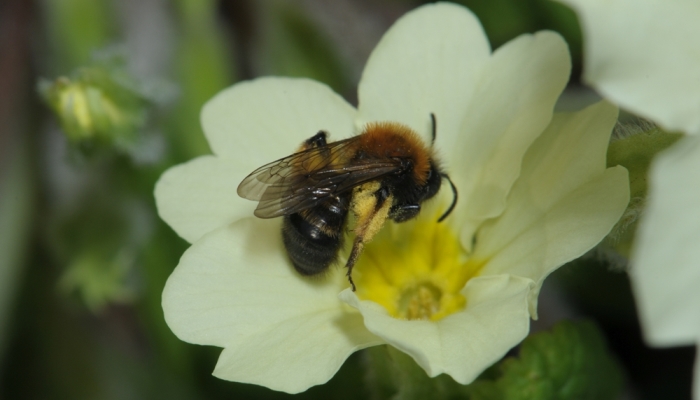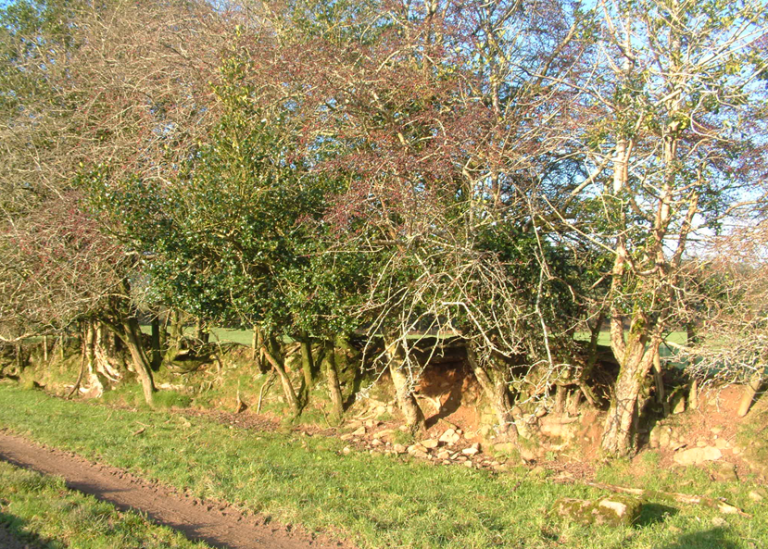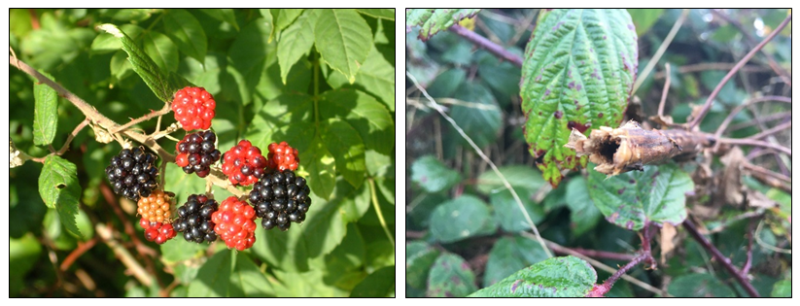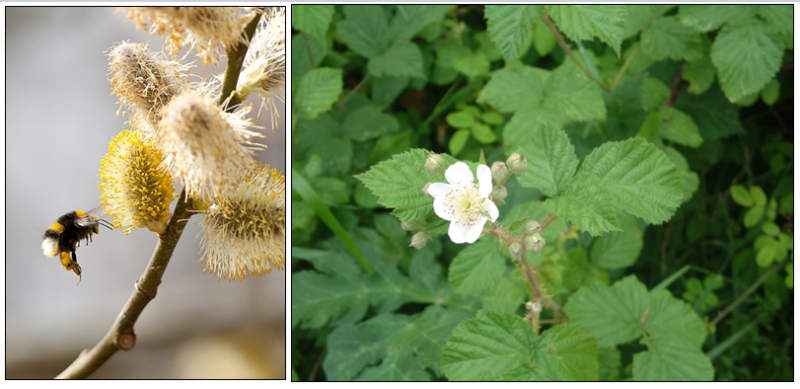08 December 2020
How bees use hedges

In Ireland there are 77 solitary bee species, 21 bumble bee species and one honey bee species. One third of our bee species are under threat of extinction. Hedges provide food and nest sites for bees. Catherine Keena, Teagasc and Stephanie Maher, Trinity College Dublin give more information
Main photo – Andrena bicolor female bee (Photographer John Breen)
Hedges in the Irish countryside are extremely valuable for bees providing food and nest sites, especially in agricultural landscapes. The All Ireland Pollinator Plan aims to try to create an Ireland where pollinators can survive and thrive.

Left to Right: Solitary Bee – Andrena haemmorhoa (Photo: Stephanie Maher); Bumblebee – Bombus Muscuorum (Photo: Stephanie Maher); and Honeybee (Photo: Elizabeth Cunningham)
Solitary Bees
A lot of our solitary species become active early in the year – March- April. At that time there are lots of lovely species flowering in hedges, like whitethorn. There are some solitary bee species that rely on early flowering species. A good example in Ireland is Andrena clarkella, which is a solitary mining bee. It relies on willow species – that’s the only plant it uses for food. So it’s really important it has access to flowering willow when active at that time of year.
There are two things that bees need to live and to thrive – food and nest sites. They must have somewhere to create a home. Hedges can provide nest sites for lots of bees. Most of the bees in Ireland nest in the ground. When a hedge occurs over a bank these can offer really great opportunities for these bees to nest, particularly if the bank is south facing getting lots of sun and is well draining. Of course there’s the added benefit of there being lots of nice food nearby occurring in the hedges where they feed.
Potential bee nest site in a south facing bank beneath a hedge

On the left Andrena cinerea (Photo: John Breen). On the right Andrena cinerea burrows (Photo John Breen)
Other solitary bees don’t nest in the ground, they nest in cavities. These are the type of species you might see in a bee hotel. When bramble stems die off, they are hollow and some of our species of solitary bees nest in those stems – another way that hedges provide important nesting resources for bees.
Bramble or blackberry fruit and hollowed stem ideal for nesting solitary bees
Bumblebees
We have about 21 species of bumble bee in Ireland and hedges are a great resource for them. The great thing about hedges is that they can flower all the way through from February to September October – into November you can even have ivy flowering in hedges. Lots of our bumblebee species require food all the way through the year and hedges are a really great food resource. Hedges also offer bumbebees somewhere to nest. Bumblebee nests are regularly found at the base of hedges in hollows where they are protected and safe from predators and close to food resources. Bumblebees often use hedges in the landscape as bee motorways to connect areas of really good food. Hedges help guide bees to find their way through the landscape.
Examples of our most common bumblebee species are the white tailed bumblebee and the buff tailed bumblebee – you’ll always see them covering hedges especially where there’s lots of bramble because they really love bramble flowers.
White tailed bumblebee Bombus lucorum (Photo: Tom Cuffe) and the bramble flower it loves
How bees forage
The really important thing about hedges is that they can offer the combination of resources – food and nest sites. It is important that they can offer them in really close proximity. This is really important especially for some of our solitary bee species that are very small. The distance that bees will travel away from their nest to get food is very closely tied to how big they are. The bigger a bee is the further it can go. Most of our solitary bees are very small and they can only travel within a couple of hundred metres of their nest sites. By providing somewhere for bees to nest and somewhere to feed in the same place, hedges are really offering everything that bees need to survive.
There’s a huge range of foraging distances that bees will travel. This is because there’s a huge range of size of bees in Ireland. Solitary bees stay quite close to their nest – within a couple of hundred metres. Bumble bee species can travel up to 3 km from their nest to gather the best food. Bees, when they’re active spend most of their time gathering food and some research has shown us that honeybees can visit up to about 5,000 flowers in one day. So it’s really important that in our landscape, we have lots of flowers at the same time.
Read more about hedgerow week here
